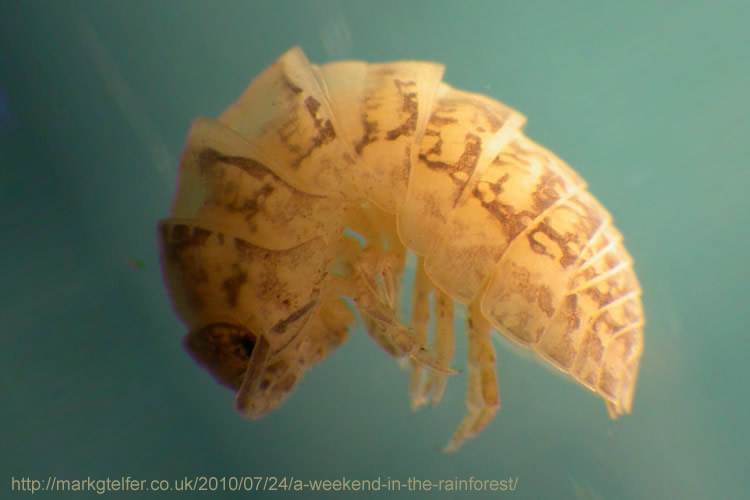Armadillidium arcangelii Strouhal, 1929
Status:
GB IUCN status: Not applicable (non-native)
ID Difficulty
Identification
Our seven Armadillidium species and Eluma caelata (Family Armadillidiidae) are readily recognised in the field by their truncated 'square' uropods that end flush with the body and their ability to roll into a protective sphere (similar truncated uropods are also seen in the non-native Armadillidae species).
Armadillidium arcangelii resembles an immature poorly pigmented Armadillidium vulgare and identification is best undertaken by examination of male pleopods. A brief description of this species with figures, based on English material, is given in Gregory (2014). A more detailed description, with colour images, is provided by Noël, Gregory & Agapakis (2022).
Distribution
Armadillidium arcangelii was initially only known from Eden Project (Mediterranean Biome), Cornwall, where females were first collected in 2005. Although a male was collected in 2010, it was over a decade before the actual species was identified (Noël, Gregory & Agapakis, 2022). Subsequently targeted surveys have found A. arcangelii at a few garden centres in England, Scotland and Ireland (BMIG Newsletter 47, pg 11) suggesting that it may be widely overlooked elsewhere.
Habitat
At the Eden Project specimens were found on the underside of large embedded rocks and sieved from litter and debris. In garden centres they seem to 'hide' beneath large potted plants.
This species is of Italian origin but in recent decades it seems to have been readily dispersed widely across Europe via the horticultural trade.
References
Gregory, S. (2014) Woodlice (Isopoda: Oniscidea) from Eden Project, Cornwall, with descriptions of species new to Britain, and poorly known British species. Bulletin of the British Myriapod & Isopod Group 27: 3-26.
Noël, F., Gregory, S.J. & Agapakis, G. (2022) Armadillidium arcangelii Strouhal, 1929 (Isopoda: Oniscidea): a step towards the conquest of Europe? Bulletin of the British Myriapod & Isopod Group 34: 72-82.
Links
World List of Marine, Freshwater and Terrestrial Isopod Crustaceans: https://www.marinespecies.org/isopoda/aphia.php?p=taxdetails&id=257636





